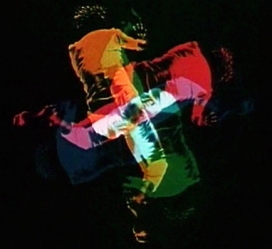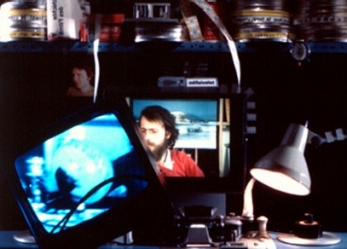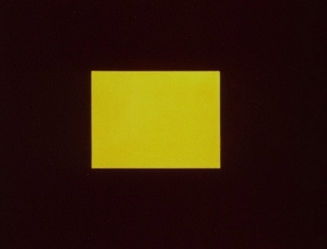Made in 1981 by the artist Dóra Maurer (b. 1937) and composer Zoltán Jeney (b. 1943), Kalah derives its name from a counting game with ancient roots that is played by two people with “seeds” on a special board. At the beginning of the game, each player has six “pits” in which 36 “seeds” are evenly distributed. The players then proceed to redistribute the seeds according to set rules, with each player aiming to accumulate the most seeds. The game is strictly mathematical and allows no room for chance, but the number of possible outcomes is vast and depends on the players’ moves. The game thus remains exciting from round to round and retains its sense of unpredictability.
This quality of a system with a large number of possible states appealed to Maurer and Jeney, both of whom experimented in visual art and in music, respectively, with serial procedures that are set in motion and allowed to run their course. Maurer, who trained as a graphic artists and painter and had been influenced by Anton Webern’s writings on serial music, became engaged in the avant-garde art circles in Hungary in the early 1970s, making conceptual and minimalist work rooted in the exploration of human perception and its responses to processes and permutations within complex systems.[3] According to curator Anna Bálványos, Maurer’s “artistic method frequently involves setting up a model situation and then permitting the players (materials and forms) to work on each other. Sometimes, she performs a transformation on the outcome and lets the process run again.” Similarly, Zoltán Jeney, who in 1970 cofounded the Budapest New Music Studio, was, according to Bálint András Varga, “perhaps the most cerebral [of its members] in his approach to composition."[4] In Jeney’s music, “processes [are] carried through to their logical ending before another process is allowed to get under way.” Both Maurer and Jeney, moreover, are notable for their use of unconventional media. Maurer has worked in film, video, and performance in addition to painting, while Jeney explains his interest in electronically synthesized sounds by saying, “I am interested in any kind of research into making sounds that have not existed in the past."[5]
In Kalah, according to the film’s opening titles, Maurer and Jeney each contributed an element of the abstract film after playing a game of kalah to a draw and wanting to represent it. Taking the number of “seeds” in the game as their starting point, Jeney wrote the electronic score consisting of 72 sounds while Maurer made the 72 colored panels, each of which is a combination of shape and color that corresponds to the volume and pitch of notes on a chromatic scale. As the sounds are played in rapid succession, the color panels flash on the screen in a pattern predetermined by a notated diagram. According to David Crowley, “Maurer . . . shot [the panels] on film in the Pannonia Film Studios in Budapest over three days. She then spent a further three weeks carefully editing the celluloid to correspond accurately with the rapid pulses of Jeney’s electronic music."[6] This fact highlights the commitment and patience that was required in the analog age to imagine the future possibilities of a digital one. (An excerpt of Kalah can be seen as part of a lecture given by Crowley at the Museum of Modern Art, New York.)
— Ksenya Gurshtein
With thanks to Sebestyén Kodolányi at the Balázs Béla Stúdió Archive and Dorottya Szörényi at the Hungarian National Digital Archive and Film Institute (Magyar Nemzeti Digitális Archívum és Filmintézet [MaNDA]) for their assistance with research and help in making a screening of this film possible in Washington.



